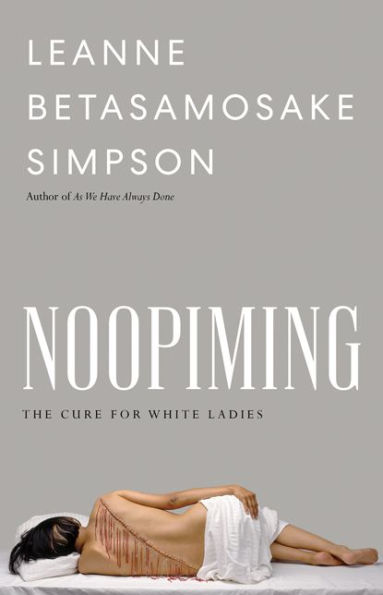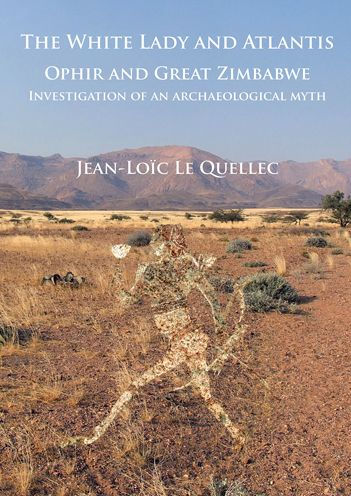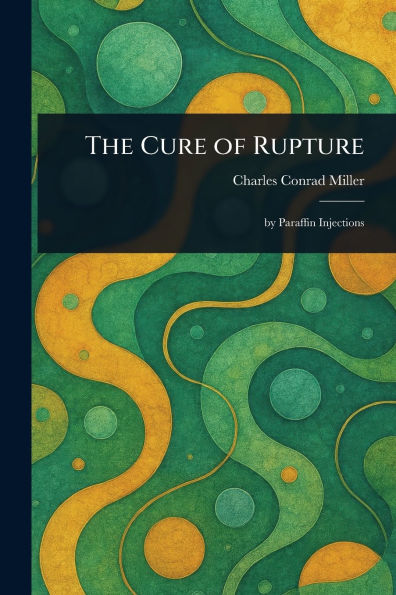Home
Noopiming: The Cure for White Ladies
Barnes and Noble
Loading Inventory...
Noopiming: The Cure for White Ladies in Franklin, TN
Current price: $24.95

Barnes and Noble
Noopiming: The Cure for White Ladies in Franklin, TN
Current price: $24.95
Loading Inventory...
Size: Audiobook
The new novel from the author of
As We Have Always Done
, a poetic world-building journey into the power of Anishinaabe life and traditions amid colonialism
In fierce prose and poetic fragments, Leanne Betasamosake Simpson’s
Noopiming
braids together humor, piercing detail, and a deep, abiding commitment to Anishinaabe life to tell stories of resistance, love, and joy.
Mashkawaji (they/them) lies frozen in the ice, remembering the sharpness of unmuted feeling from long ago, finding freedom and solace in isolated suspension. They introduce the seven characters: Akiwenzii, the old man who represents the narrator’s will; Ninaatig, the maple tree who represents their lungs; Mindimooyenh, the old woman, their conscience; Sabe, a gentle giant, their marrow; Adik, the caribou, their nervous system; and Asin and Lucy, the humans who represent their eyes, ears, and brain.
Simpson’s book
argued for the central place of storytelling in imagining radical futures.
(Anishinaabemowin for “in the bush”) enacts these ideas. The novel’s characters emerge from deep within Abinhinaabeg thought to commune beyond an unnatural urban-settler world littered with SpongeBob Band-Aids, Ziploc baggies, and Fjällräven Kånken backpacks. A bold literary act of decolonization and resistance,
offers a breaking open of the self to a world alive with people, animals, ancestors, and spiritsand the daily work of healing.
As We Have Always Done
, a poetic world-building journey into the power of Anishinaabe life and traditions amid colonialism
In fierce prose and poetic fragments, Leanne Betasamosake Simpson’s
Noopiming
braids together humor, piercing detail, and a deep, abiding commitment to Anishinaabe life to tell stories of resistance, love, and joy.
Mashkawaji (they/them) lies frozen in the ice, remembering the sharpness of unmuted feeling from long ago, finding freedom and solace in isolated suspension. They introduce the seven characters: Akiwenzii, the old man who represents the narrator’s will; Ninaatig, the maple tree who represents their lungs; Mindimooyenh, the old woman, their conscience; Sabe, a gentle giant, their marrow; Adik, the caribou, their nervous system; and Asin and Lucy, the humans who represent their eyes, ears, and brain.
Simpson’s book
argued for the central place of storytelling in imagining radical futures.
(Anishinaabemowin for “in the bush”) enacts these ideas. The novel’s characters emerge from deep within Abinhinaabeg thought to commune beyond an unnatural urban-settler world littered with SpongeBob Band-Aids, Ziploc baggies, and Fjällräven Kånken backpacks. A bold literary act of decolonization and resistance,
offers a breaking open of the self to a world alive with people, animals, ancestors, and spiritsand the daily work of healing.
The new novel from the author of
As We Have Always Done
, a poetic world-building journey into the power of Anishinaabe life and traditions amid colonialism
In fierce prose and poetic fragments, Leanne Betasamosake Simpson’s
Noopiming
braids together humor, piercing detail, and a deep, abiding commitment to Anishinaabe life to tell stories of resistance, love, and joy.
Mashkawaji (they/them) lies frozen in the ice, remembering the sharpness of unmuted feeling from long ago, finding freedom and solace in isolated suspension. They introduce the seven characters: Akiwenzii, the old man who represents the narrator’s will; Ninaatig, the maple tree who represents their lungs; Mindimooyenh, the old woman, their conscience; Sabe, a gentle giant, their marrow; Adik, the caribou, their nervous system; and Asin and Lucy, the humans who represent their eyes, ears, and brain.
Simpson’s book
argued for the central place of storytelling in imagining radical futures.
(Anishinaabemowin for “in the bush”) enacts these ideas. The novel’s characters emerge from deep within Abinhinaabeg thought to commune beyond an unnatural urban-settler world littered with SpongeBob Band-Aids, Ziploc baggies, and Fjällräven Kånken backpacks. A bold literary act of decolonization and resistance,
offers a breaking open of the self to a world alive with people, animals, ancestors, and spiritsand the daily work of healing.
As We Have Always Done
, a poetic world-building journey into the power of Anishinaabe life and traditions amid colonialism
In fierce prose and poetic fragments, Leanne Betasamosake Simpson’s
Noopiming
braids together humor, piercing detail, and a deep, abiding commitment to Anishinaabe life to tell stories of resistance, love, and joy.
Mashkawaji (they/them) lies frozen in the ice, remembering the sharpness of unmuted feeling from long ago, finding freedom and solace in isolated suspension. They introduce the seven characters: Akiwenzii, the old man who represents the narrator’s will; Ninaatig, the maple tree who represents their lungs; Mindimooyenh, the old woman, their conscience; Sabe, a gentle giant, their marrow; Adik, the caribou, their nervous system; and Asin and Lucy, the humans who represent their eyes, ears, and brain.
Simpson’s book
argued for the central place of storytelling in imagining radical futures.
(Anishinaabemowin for “in the bush”) enacts these ideas. The novel’s characters emerge from deep within Abinhinaabeg thought to commune beyond an unnatural urban-settler world littered with SpongeBob Band-Aids, Ziploc baggies, and Fjällräven Kånken backpacks. A bold literary act of decolonization and resistance,
offers a breaking open of the self to a world alive with people, animals, ancestors, and spiritsand the daily work of healing.

















